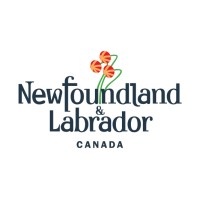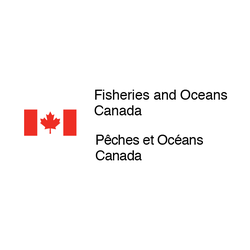
Closed
The Newfoundland and Labrador Disaster Financial Assistance Program (NL-DFAP)
Last Update: December 10, 2025
NL, Canada
Provides financial aid for uninsurable disaster-related damages and losses
Grant and Funding
At a glance
Funding available
Financing goals
No objectives are currently available
Eligible Funding
- Up to 70% of project cost
Timeline
- Receipt of requests is now closed
Eligible candidates
Eligible Industries
- Agriculture, forestry, fishing and hunting
- Other services (except public administration)
- Public administration
Location
- Newfoundland and Labrador
Legal structures
- Financial cooperative
- Non-profit
- Public or Parapublic institution
- For-profit business
- Sole proprietorship
- Non-financial cooperative
Annual revenue
- From $ 10,000 to $ 2,000,000 in revenue
Organisation size
- 20 employees maximum
Audience
- Indigenous Peoples
- Rural or Northern Residents
- Canadians
Non-profit candidates
Sector of operation
- Emergency and Relief
- Economic, Social and Community Development
- Housing
Target group
- General public
- Rural / Remote communities
Revenue structure
- All structures
Scope
- Local
- Municipal
- Regional
- Provincial
Overview
The Newfoundland and Labrador Disaster Financial Assistance Program (NL-DFAP) provides emergency financial aid to individuals, small businesses, not-for-profits, and local authorities for uninsurable losses and damages caused by eligible natural disasters. Funding aims to reinstate essential living conditions and restore damaged property, with maximum assistance for homes based on the average provincial home price at the time of loss, covering costs such as repairs, essential belongings, debris removal, and restoration.
Activities funded
- Repair and restoration of primary residences and essential property damaged by an eligible disaster.
- Recovery and re-establishment of small business operations affected by a disaster, including necessary repairs and replacement of equipment.
- Restoration and rebuilding of not-for-profit organization facilities and essential community services impacted by disaster events.
- Mitigation projects designed to reduce vulnerability to future disasters, subject to approval.
- Emergency clean-up activities required to enable the safe resumption of occupancy or business operations.
Examples of admissible projects:
$ 100,000
Launch of year-round rooftop urban garden to supply food banks
$ 95,000
Installation of energy-efficient HVAC systems for community facility
$ 69,500
Development of bilingual e-commerce website for local artisans
$ 85,500
Implementation of ERP software for inventory and accounting integration
$ 57,000
Creation of a community food box program for seniors
$ 65,000
Acquisition of accessible transportation van for disability services
Eligibility
- The applicant must be a small business with annual gross revenues between $10,000 and $2 million.
- The business must not have more than the equivalent of 20 full-time employees.
- The business must be owner-operated, with the owner-operator managing the day-to-day operations and owning at least 50% of the business.
- The applicant must be the legal owner of the business applying for assistance.
- The claimed damages must be a result of an eligible natural disaster and must not have been reasonably insurable.
Who is eligible?
- Small businesses (including landlords)
- Farming operations
- Self-employed fishers, trappers, and loggers
- Not-for-profit organizations
- Not-for-profit cooperatives
Eligible expenses
- Cleaning and debris removal (including out-of-pocket costs, waste disposal, and hazardous material removal).
- Compensation for hours spent on clean-up at minimum wage (up to a capped amount).
- Repair and restoration of damaged business premises to their pre-disaster condition, as substantiated by damage appraisal reports.
- Replacement or repair of damaged essential business equipment and inventory required for operations.
- Incremental compensation paid to employees or contractors specifically for clean-up activities after the disaster.
- Reasonable fixed business expenses incurred due to the disaster (e.g., rental of office space and equipment for a limited period).
- Restoration, rebuilding, or replacement of damaged facilities owned by not-for-profit organizations.
- Landscaping costs only if they are an essential part of business operations (such as golf courses or botanical gardens).
- Levelling and restoring damaged farmland to workable condition for farms.
- Replacement or repair of farm machinery, equipment, livestock (if uninsurable), and harvested crops or business inventory in storage.
Eligible geographic areas
- Newfoundland and Labrador
How to apply
1
Wait for program activation
- Wait for the NL-DFAP program to be officially approved and publicly announced for the relevant disaster event
- Do not prepare or submit applications prior to official activation
- Monitor government channels for activation announcements and further instructions
2
Review guidelines and instructions
- Once the program is active, review public instructions on how to apply
- Obtain the appropriate application forms and program guidelines
- Ensure you understand the eligibility criteria for your applicant category
3
Gather required documentation
- Collect necessary supporting documents such as proof of ownership, proof of principal residence, insurance confirmation, invoices, and records of losses or damages
- Ensure documentation meets the requirements for your applicant type (homeowner, tenant, small business, not-for-profit, etc.)
4
Submit application and documents
- Complete the NL-DFAP application form thoroughly
- Attach all required supporting documents
- Submit your application within 90 days of the program approval date (extensions may be considered for extraordinary circumstances)
5
Await application review
- Wait for acknowledgement of receipt and initial review by Emergency Services Division (ESD)
- If additional information is required, respond within the specified deadline
6
Participate in assessment and settlement
- If eligible, participate in the assessment process with the insurance adjuster and claims examiner
- Choose your settlement option if approved (repair by contractor at 100% eligible costs or cash settlement at 70%)
- Sign and return the Final Release and Indemnity (FRI) form
Additional information
- The program is only activated following a public announcement after an eligible disaster has occurred.
- Applicants must disclose insurance payouts and assistance from other sources, which will be deducted from the final settlement amount.
- False or withheld information can result in disqualification from receiving assistance.
- A request for reconsideration can be submitted within 30 days if an applicant disagrees with a denial or settlement amount.
Contacts
NL-DFAP@gov.nl.ca
1-888-395-5611
NL, Canada
Apply to this program
Frequently Asked Questions about the The Newfoundland and Labrador Disaster Financial Assistance Program (NL-DFAP) Program
Here are answers to the most common questions about the The Newfoundland and Labrador Disaster Financial Assistance Program (NL-DFAP). This section explains what the program is, how much funding is available, eligibility requirements, application deadlines, and other important details to help you determine if this grant is right for your business.
What is the The Newfoundland and Labrador Disaster Financial Assistance Program (NL-DFAP)?
How much funding can be received?
What expenses are eligible under The Newfoundland and Labrador Disaster Financial Assistance Program (NL-DFAP)?
What is the deadline to apply?
Is the The Newfoundland and Labrador Disaster Financial Assistance Program (NL-DFAP) a grant, loan, or tax credit?
Who are the financial supporters of the The Newfoundland and Labrador Disaster Financial Assistance Program (NL-DFAP)?
Who is eligible for the The Newfoundland and Labrador Disaster Financial Assistance Program (NL-DFAP) program?
Who can I contact for more information about the The Newfoundland and Labrador Disaster Financial Assistance Program (NL-DFAP)?
Where is the The Newfoundland and Labrador Disaster Financial Assistance Program (NL-DFAP) available?
Are Indigenous Peoples eligible for the The Newfoundland and Labrador Disaster Financial Assistance Program (NL-DFAP) program?
Apply to this program
More programs like this

Wage Subsidies And InternsOpen
Employment Enhancement Program
Population Growth and SkillsGet a wage subsidy to hire employees

Loans and Capital investmentsOpen
Aquaculture Capital Equity Program
Government of Newfoundland and LabradorNewfoundland and Labrador commercial aquaculture funding

Tax CreditsOpen
Direct Equity Tax Credit
Government of Newfoundland and LabradorTax credit for Newfoundland and Labrador investors

Grant and FundingOpen
Multi-Species Research and Development Fund
Department of Fisheries, Forestry and AgricultureResearch and development of aquaculture species

Grant and FundingOpen
Newfoundland and Labrador — Business Growth Program
Government of Newfoundland and LabradorSupports Newfoundland and Labrador businesses to innovate and expand markets

Grant and FundingClosed
Business Development Support Program
Government of Newfoundland and LabradorMoney for business improvement in Newfoundland and Labrador

Grant and FundingOpen
Atlantic Fisheries Fund — Innovation
Fisheries and Oceans Canada (DFO)Supports innovation, infrastructure, and science partnerships in Atlantic fisheries

Loans and Capital investmentsOpen
Business Investment Program — Equity Investment
Government of Newfoundland and LabradorEquity funding for business improvement in Newfoundland and Labrador

Tax CreditsOpen
Newfoundland and Labrador green technology tax credit
Government of Newfoundland and LabradorTax credit for corporations investing in green technology equipment

Tax CreditsClosed
Small Business Tax Credit
Government of Newfoundland and LabradorReduced tax rate for Newfoundland and Labrador small business
Sign up to our platform to access the The Newfoundland and Labrador Disaster Financial Assistance Program (NL-DFAP) information sheet for free
Get access to 4,000+ programs, practical guides, personalized alerts, and an AI assistant to support your grant applications.